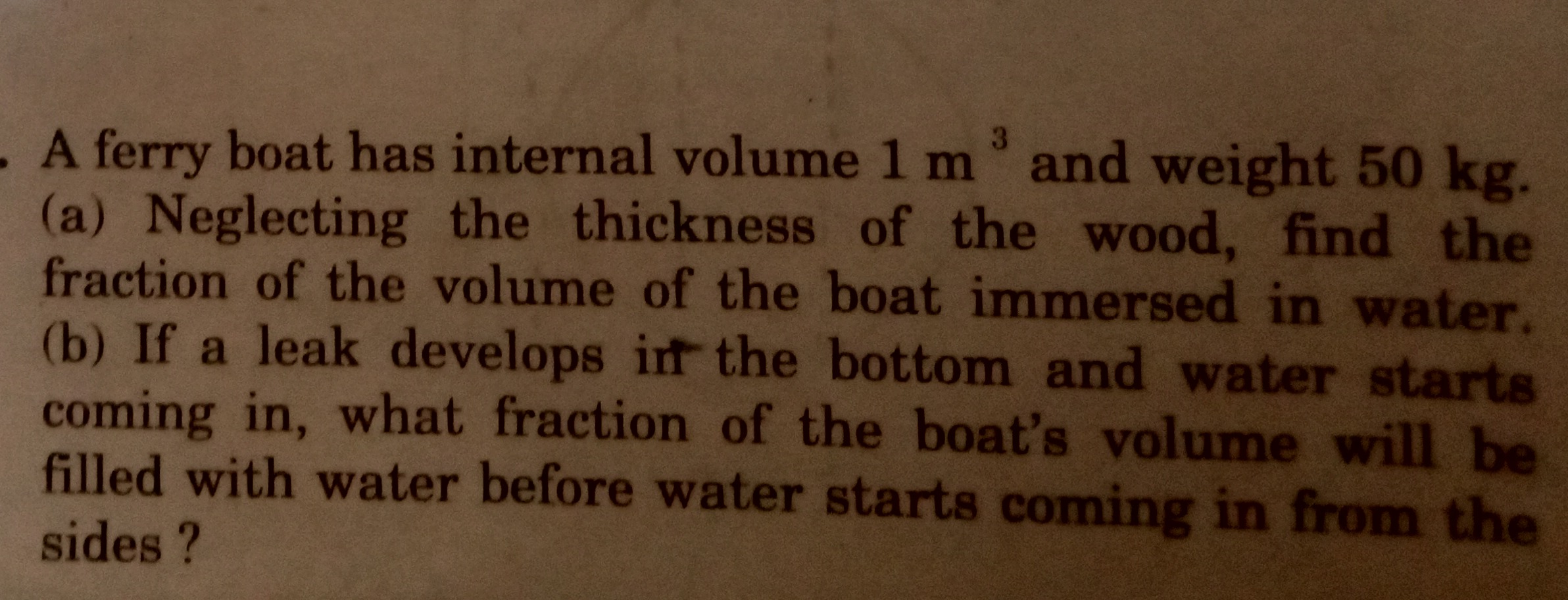Question
Question: A ferry boat has internal volume 1 m³ and weight 50 kg. (a) Neglecting the thickness of the wood, fi...
A ferry boat has internal volume 1 m³ and weight 50 kg. (a) Neglecting the thickness of the wood, find the fraction of the volume of the boat immersed in water. (b) If a leak develops in the bottom and water starts coming in, what fraction of the boat's volume will be filled with water before water starts coming in from the sides ?

(a) 0.05 (b) 0.95
Solution
(a) For a floating object, the buoyant force equals its weight. The buoyant force is given by FB=ρwaterVimmersedg, and the weight of the boat is Wboat=mboatg. Setting these equal: mboatg=ρwaterVimmersedg. Given mboat=50 kg, ρwater=1000 kg/m³, and Vboat=1 m³ (assuming external volume is approximately internal volume as thickness is neglected), we have 50g=1000×Vimmersed×g. Solving for Vimmersed, we get Vimmersed=100050=0.05 m³. The fraction immersed is VboatVimmersed=10.05=0.05.
(b) The boat is on the verge of sinking when the total weight (boat + water inside) equals the maximum buoyant force, which occurs when the boat is fully submerged. The maximum buoyant force is FB,max=ρwaterVboatg. The weight of water inside the boat is Wwater_in=ρwaterVwater_ing. The total weight is Wtotal=Wboat+Wwater_in=mboatg+ρwaterVwater_ing. At the point of sinking: mboatg+ρwaterVwater_ing=ρwaterVboatg. Substituting values: 50g+1000Vwater_ing=1000×1×g. Cancelling g: 50+1000Vwater_in=1000. Solving for Vwater_in: 1000Vwater_in=950, so Vwater_in=0.95 m³. The fraction of the boat's internal volume filled with water is VinternalVwater_in=10.95=0.95.
